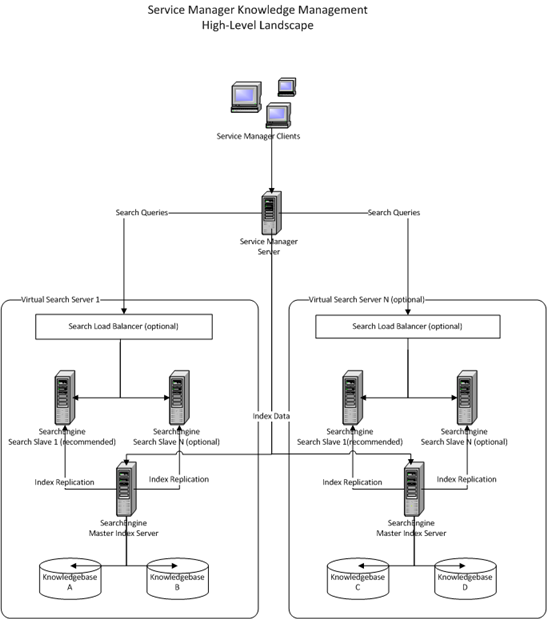Searching the Help
To search for information in the Help, type a word or phrase in the Search box. When you enter a group of words, OR is inferred. You can use Boolean operators to refine your search.
Results returned are case insensitive. However, results ranking takes case into account and assigns higher scores to case matches. Therefore, a search for "cats" followed by a search for "Cats" would return the same number of Help topics, but the order in which the topics are listed would be different.
| Search for | Example | Results |
|---|---|---|
| A single word | cat
|
Topics that contain the word "cat". You will also find its grammatical variations, such as "cats". |
|
A phrase. You can specify that the search results contain a specific phrase. |
"cat food" (quotation marks) |
Topics that contain the literal phrase "cat food" and all its grammatical variations. Without the quotation marks, the query is equivalent to specifying an OR operator, which finds topics with one of the individual words instead of the phrase. |
| Search for | Operator | Example |
|---|---|---|
|
Two or more words in the same topic |
|
|
| Either word in a topic |
|
|
| Topics that do not contain a specific word or phrase |
|
|
| Topics that contain one string and do not contain another | ^ (caret) |
cat ^ mouse
|
| A combination of search types | ( ) parentheses |
|
Overview of the Solr Search Engine
Note Service Manager supports both the Solr Search Engine and the IDOL Search Engine for Knowledge Management (KM) search. The IDOL Search Engine is available only when you have Smart Analytics installed and enabled. Once Smart Analytics is enabled, you cannot use the Solr Search Engine anymore. For information about how to install and configure Smart Analytics and use Smart Search, see Install and configure Smart Analytics and Smart Analytics overview.
The Solr-based search engine enables the Knowledge Management module to index over 1,200 unique file formats, including the latest versions of Microsoft Office and OpenOffice formats, PDF, HTML/XML, compression, image, audio, and so on.
Due to its flexible architecture, the Solr search engine provides scalability and improves indexing performance by supporting the use of multiple index servers. It supports high availability architectures, which include decoupling of search servers from index servers, replication of the search server to multiple servers, and the addition of a load balancer across multiple search servers; in addition, it can provide fail-safe capabilities, such as the creation of a second index server or search server for failover and the ability to switch to a backup server immediately without having to restart or log out and log back in to your Service Manager server.
The following diagram illustrates an example Service Manager Knowledge Management high-level landscape.

A Knowledge Management search server is composed of three parts: an indexer, a searcher, and a crawler. These server parts are responsible for the following:
- Indexer: Indexes documents into searchable data
- Searcher: Provides results to users' search requests
- Crawler: Indexes the file system and web content
Knowledgebases are assigned to a Knowledge Management search server. If you have a single search server definition, all knowledgebases will be indexed and searched according to that configuration.
When one or more slave servers are defined, all knowledgebases assigned to this virtual search engine will be replicated to each slave. Replication happens when a knowledgebase is re-indexed or the index is updated. Depending on the size of the knowledgebases, they may not be immediately searchable while the replication process is running. If this is a new slave server, you will have to wait for the replication process to finish before you are able to search. Subsequent updates or re-indexes will happen in the background. The slave server will continue to serve search requests on the old knowledgebase until the updated knowledgebase comes on line. It will then automatically begin serving search requests against the new knowledgebase.
Supported Platforms
The search engine runs on multiple platforms, with the same server compatibility as Service Manager.
Language Support
Due to its up-to-date technology, the search engine offers improved Asian language support. Thesaurus maintenance is a lot easier compared to the K2 search engine, because it can now be done through text-based editing. For more information, see Supported Languages for the Solr Search Engine and Create Search Engine Thesaurus Files.
Upgrade
Upgrading from a custom legacy search engine to the cutting edge Solr search engine is invisible to the end-user, and the administrator only needs to assign the new Solr search servers to the existing knowledgebases and re-index. The Search Engine Management has been greatly simplified – there is no more need for mapped drives and complex environment records. For more information, see Upgrading from the K2 Search Engine.
Flexible Installation of File/Web Crawlers
The File/Web Crawlers are no longer chained to the search engine, and can be located separately, with many new website formats supported.











